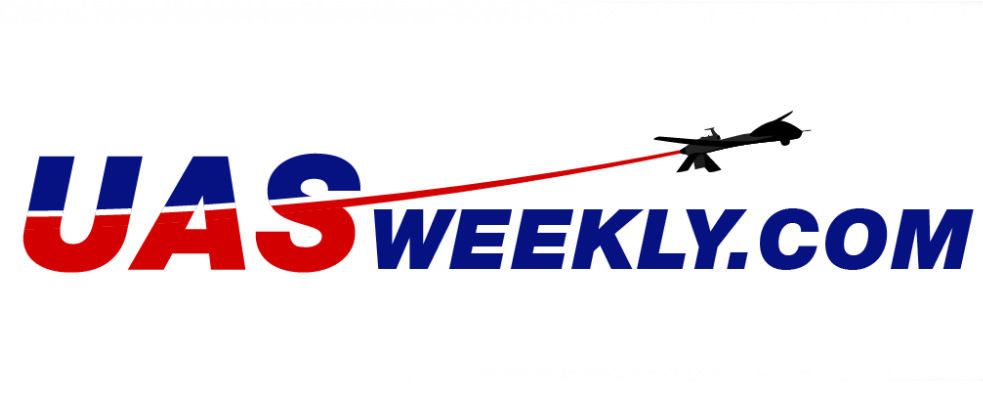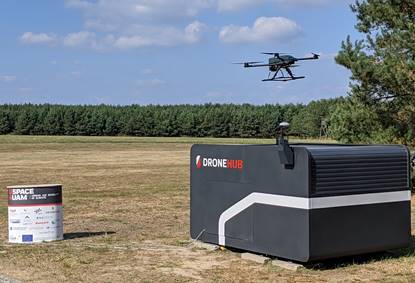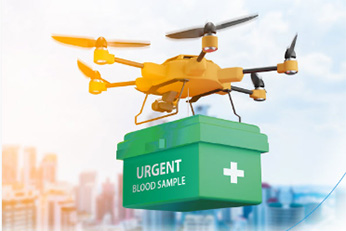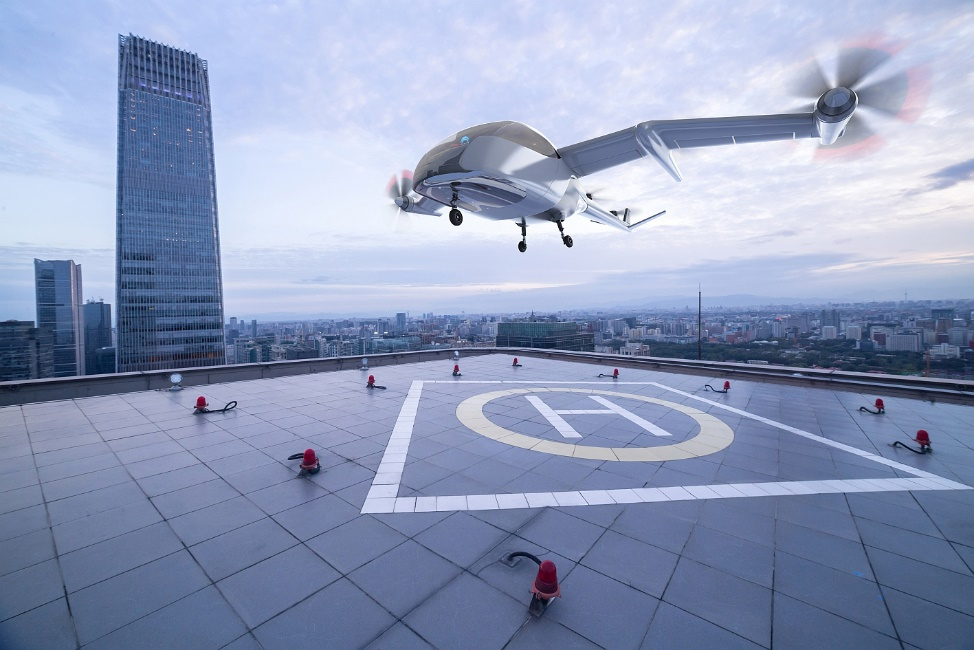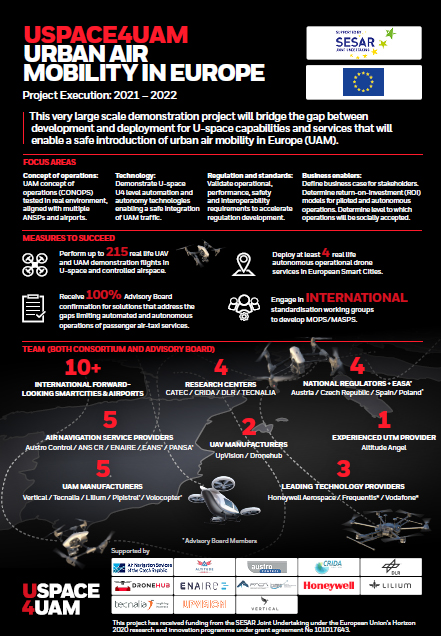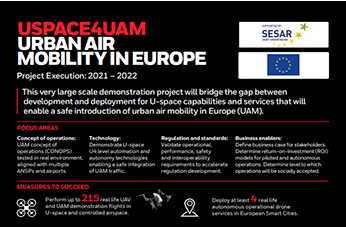Aiming to bridge the gap between development and deployment, this VLD project tackled issues of operational concepts, regulation, and standards, while building confidence in a safe and orderly integration of UAM in every days air traffic. It does this with a consortium of forward-looking cities and ANSPs, national regulators and EASA, a well experienced UTM provider, as well as eVTOL manufacturers, research centers, and technology providers. A series of well defined, iterative and multi-national demonstrations, both with drones and UAM vehicles were being conducted. They covered different use cases, including mixed operations, to allow the project to derive critical enablers for a wide set of UAM service applications that can be applied all over Europe.
Uspace4UAM built on the CORUS project results and on operational and business experience already gathered in operational drone service implementations in Europe. It studied safety cases and their impact on system requirements, and looked at how regulation and standardisation can be set up to support innovators to build a sustainable business case while operating safely in a multi-modal transport network. This project set to deliver results that are of real interest to “early movers”, enabling them to bring a real market impact in the next few years. In order to prove that this was achieved, and that indeed the project laid a bridge between development and deployment, the project set to deliver a number of commercial contracts for the provision of fully automated drone services, and present solutions to identified gaps towards fully autonomous Urban Air Taxi services.


